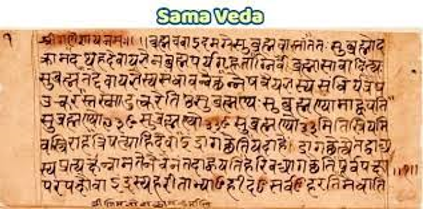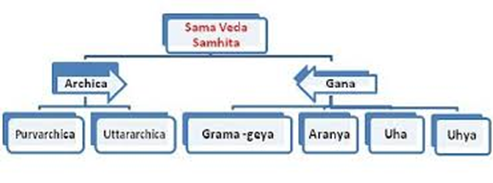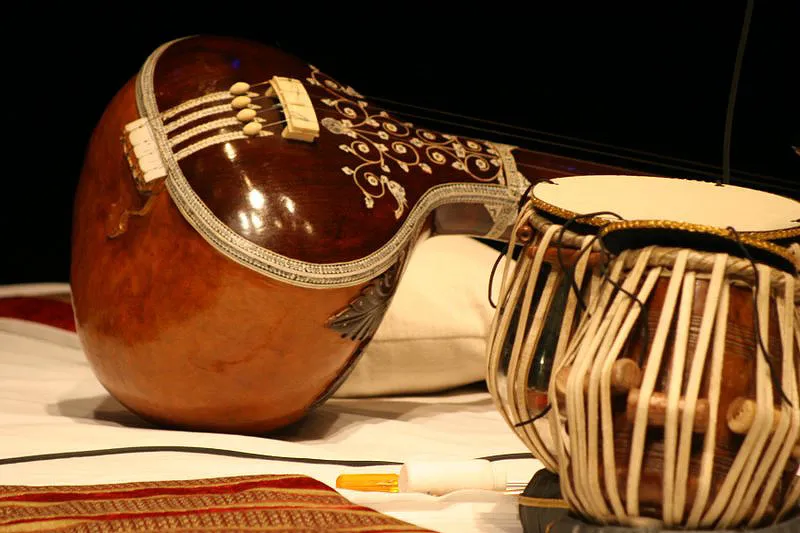THE FOUR VEDAS – RIGVEDA, YAJURVEDA, SAMAVEDA, ATHARVAVEDA
There are four Vedas: the Rigveda, the Yajurveda, the Samaveda and the Atharvaveda.
Hindus consider the Vedas to be apauruṣeya, which means "not of a man, superhuman" and "impersonal, authorless,". The text in the Vedas are revelations of sacred sounds and texts heard by ancient sages after intense meditation for a long time.
Each Veda has four subdivisions – the Samhitas (mantras and benedictions), the Aranyakas (text on rituals, ceremonies, sacrifices and symbolic-sacrifices), the Brahmanas (commentaries on rituals, ceremonies and sacrifices), and the Upanishads (texts discussing meditation, philosophy and spiritual knowledge).
The Vedas have been orally transmitted from since the 2nd millennium BCE with the help of elaborate mnemonic techniques. The mantras (Vedic hymns) are the oldest part of the Vedas and are primordial rhythms of creation. By reciting them, the cosmos is said to be regenerated as these mantras enliven and nourish the different forms of creation through their vibrations (Nada Yoga). The Vedic hymns themselves assert that they were skilfully created by Rishis (sages), after hours of meditation and are sung only in 3 notes so that the frequencies remain in a narrow range. (Please read the section on Mantras and Nada Yoga to understand the impact of these mantras)
THE SAMAVEDA
The Samaveda (Sanskrit: सामवेद, sāmaveda), one of the four Vedas, is the Veda of melodies and chants. The word Samaveda comes from the Sanskrit word sāman “song” and Veda "knowledge".
The Samaveda which means musical rendering is the earliest known form of organised music literature of the world. It is an ancient Hindu scripture and one of the four main Vedas of Hinduism. It is a collection of melodies and chants, and is also called the "Book of Song," "Veda of Chants" or even "Yoga of Song."

It is basically the words of the "Rig Veda" set to music. Sama Veda Samhita (collection) cannot be read as a Text. It is a musical score sheet to be sung or heard. It contains the musical substance for the words that are described in the Rigveda and it is a liturgical text which consists of 1,549 verses.
Sama Veda is linked to music through Yajna. During the yajnas, Gods are invited by singing hymns dedicated to them. Mantras are recited while submitting offerings to them through Agni (fire), the carrier. The group of priests that sang the mantras put together a text of selected mantras that can be sung during the performance of a yajna. That text of lyrical mantras came to be known as the Samaveda Samhita and was regarded as one of the three vedas. Thus the contents of the Samaveda represent a synthesis of music and sounds, with meaning and spirituality.
Out of the 1,549 mantras in Sama Veda Samhita, as many as 1,474 mantras are taken from Rig Veda (mainly from the eighth and the ninth Mandalas). It is said that the Sama is composed of ‘Sa’ which is the vedic mantras and ‘Ama’ meaning various notes.
The Samaveda thus contains the musical substance for the words described in the Rigveda. To retain the tonal and verbal purity of the mantras, a number of methods were devised to preserve the unwritten vedas in their purest form. Rules were laid down to make sure that not a syllable was changed in chanting, not a svara was altered. In this way they ensured that the full benefits were derived from chanting the mantras. The time taken was also fixed to enunciate each syllable of a word and this unit of time or time interval was called "matra” (traditional unit used for measuring the unit of breath). How we must regulate our breathing to produce the desired vibration in a particular part of our body so that the sound of the syllable enunciated is produced in its pure form. The most important thing for a student of Vedanta is Siksa (meaning instruction) of vedic phonetics. Correct pronunciation, accentuation etc. of the Samhita texts is most important in the case of the Vedic language, because we see that change in sound leads to change in results and effect.
The Sama chanting is recognized by all musicologists as the basis for the Indian Music. While the riks (mantras in praise of deities) are chanted with the tonal differences of udatta, anudatta and svarita, the samans are intoned musically according to certain rules. Our music, based on the seven notes (saptasvara), has its origin in Samaveda. As mentioned above, many of the mantras of the Rigveda are recited with a cadence, thus we have Samagana. The roots of Sangita, the traditional (classic) Indian Music are firmly founded in Sama- gana. Indian music and chants in the Samaveda became the organsing principle for the structure and theory of Indian Classical music and dance. In addition to singing and dancing, the Samaveda mentions instruments too. The rules and suggestions for playing various instruments form a separate compilation, called the Gandharva-Veda, and this Upaveda is attached to the Samaveda.
In India even today especially in the southern part of India it is customary to invoke Gods and Goddess through music and dance by singing their hymns. This musical substance is taala (hyperlink) and swara(hyperlink). Taala measures the time dimension of music and svara explains the dimension of the musical pitch or is the musical note.
Organization of the Samaveda

The Samaveda has been extremely well organised.
The Samaveda comprises of two major parts. The first part include four melody collections -
- GANA – four melody collections. The Gana collection has been divided into Grama-geya and Aranya-geya. Gramageya melodies are for public recitation in the village and Aranyageya melodies are for personal meditative use such as when one is meditating in a forest. Uha and Uhya were essential for chanters who were performing Soma sacrifices.
- ARCHIKA- Archika is the mantras. A melody in the song books corresponds to a verse in the arcika books. The Purvacika portion of the Samaveda has 585 single stanza verses and is organised in order of the deities. The Uttararchika portion is in order of rituals.
The Purvacika portion is sung to melodies described in the Gramageya-Gana portion. The Uha and Uhya gana follow another text called Puspasutra in their ritual sacrifices. The Puspasutra contains rules on how verses are mapped to verses.
Just like Rigveda, the early sections of Samaveda begins with Agni and Indra hymns but shift to abstract topics and philosophy. The mantras too shift in a descending order.
The Samaveda, like other Vedas, contains several layers of text, with Samhita being the oldest and the Upanishads the youngest layer. Samaveda samhita is not meant to be read as a text, it is like a musical score sheet that must be heard.
Staal states that the melodies likely existed before the verses in ancient India, and the words of the Rigveda verses were made to fit in those pre-existing melodies, because some early words fit and flow, while later words do not really fit the melody in the same verse. Creative structures, called Stobhas are used to help embellish and change the words so that they can fit into a desired musical harmony better. Some verses add in meaningless sounds just to make the harmony fit, remarks Staal.]
In conclusion, the Samaveda has been extremely well organised with chants and melodies divided as per the purpose and occasion. The contents of the Samaveda represent a tradition that has to be very strictly followed. It is a creative synthesis of music, sounds, meaning and spirituality.
In India even today especially in the southern part of India it normal practise to invoke Gods and Goddess through music and dance by singing their hymns. This musical substance is taala (hyperlink) and swara(hyperlink). Taala measures the time dimension of music and svara explains the dimension of the musical pitch or is the musical note.
References
https://sreenivasaraos.com/2012/09/15/music-in-sama-veda/

